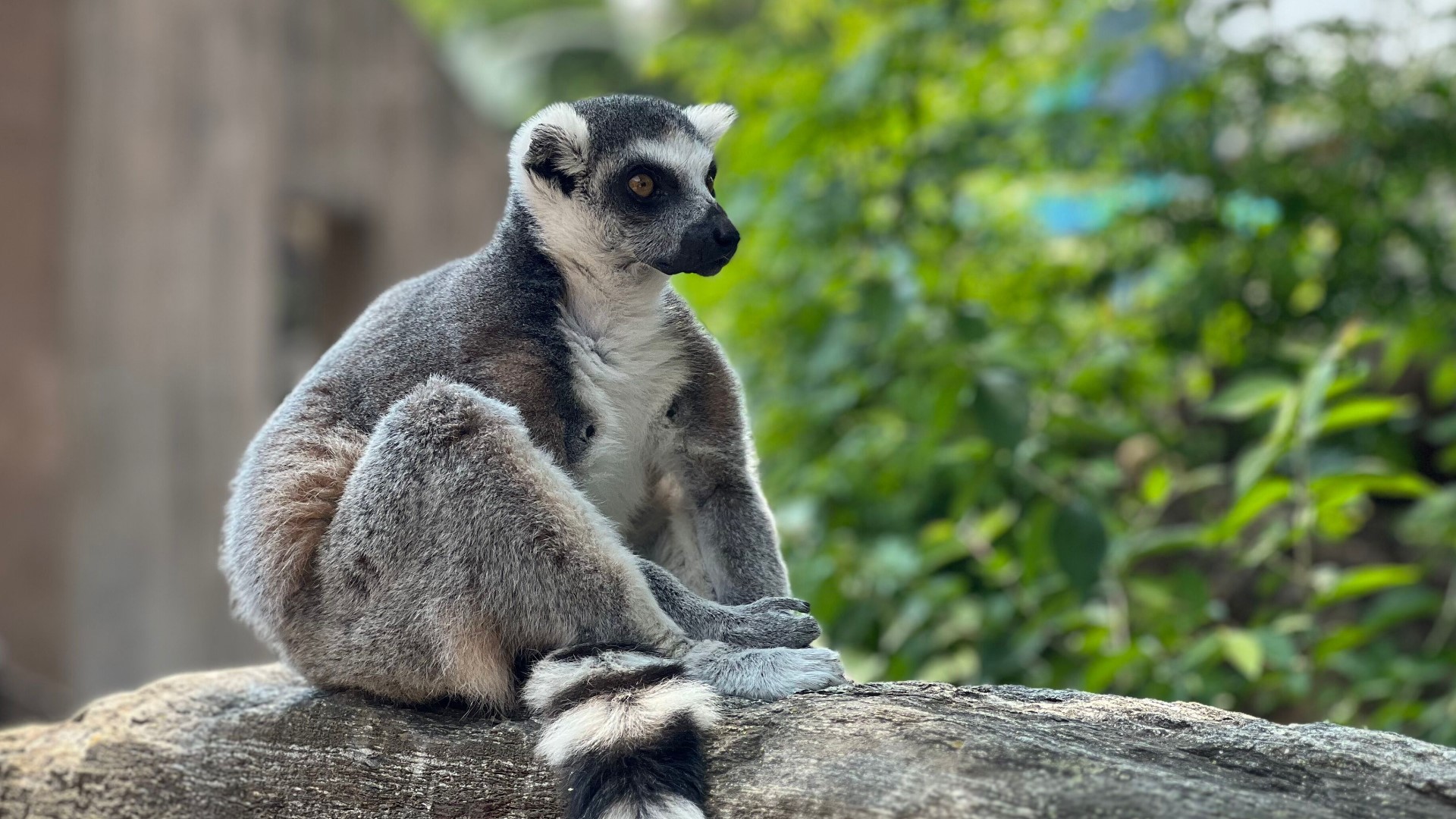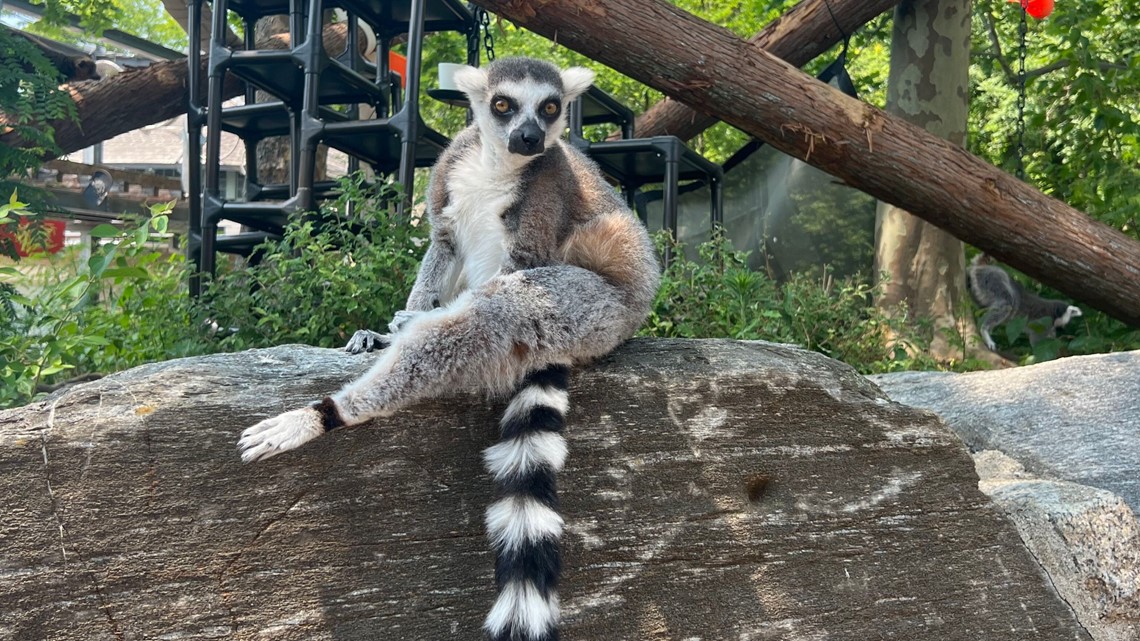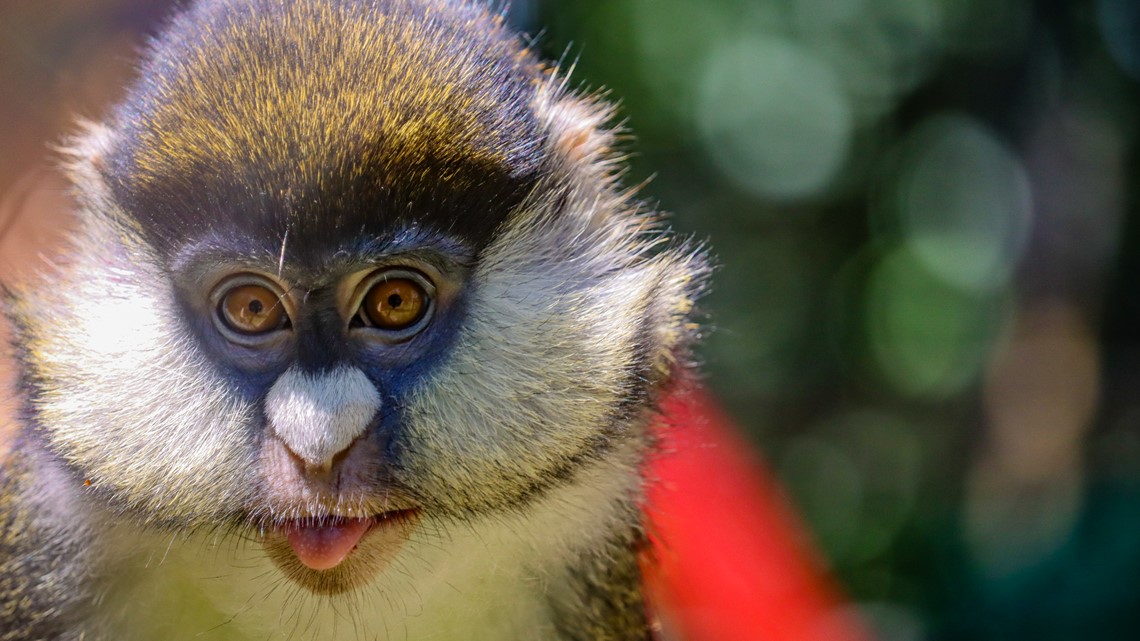Philadelphia Zoo announces baby boom of rare species and brand new walk-through experience
Following the big news of the birth of two sloth bear cubs, the Zoo announced the debut of two Humboldt penguin chicks, Arapawa goats and red-tailed monkeys.
Kory Aversa

There's a baby boom at the Philadelphia Zoo!
Following the big news of the birth of two sloth bear cubs, the Zoo announced the debut of two Humboldt penguin chicks, a vulnerable species, the birth of two Arapawa goats, a rare breed with less than 500 in the world and the return of red-tailed monkeys, a species that last lived at the zoo in 1928.
“We are delighted to share these exciting hatchings, births, and animal experiences with our guests, members, and greater Zoo community,” said Vice President of Animal Well-Being Rachel Metz in a statement.
“Part of Philadelphia Zoo’s mission is to inspire action for wildlife and habitats, and watching baby animals grow, learning about a species that hasn’t been at the Zoo for nearly 100 years and engaging with endangered lemurs in a brand-new space is sure to connect our guests to wildlife in a new and exciting way," Metz continued.
Lemur Island
The public is also invited to experience the debut of Lemur Island, which houses a family of ring-tailed and mongoose lemurs.


The brand-new walk-through experience takes guests inside their exhibit located outside of PECO Primate Reserve with no fences, moats or barriers of any kind.
According to the Zoo, the experience brings guests right next to the endangered species, helping them grow a greater appreciation of what makes them so amazing and why they need protection.
Here are some quick ring-tailed lemur facts:
● Ring-tailed lemurs are named for their long black and white ringed tail, which always ends in a black tip
● Ring-tailed lemurs spend much of their time on the ground and this species is the only living semi-terrestrial lemur
● IUCN Status: Endangered. Habitat loss and hunting are the greatest causes of concern
Next up, some fast mongoose lemur facts:
● Mongoose lemurs love nectar, which makes them important pollinators in their native forest
● Their fur is heavy and wooly and they are sexually dichromatic. Males have gray to brown backs, pale faces, red cheeks and beards.
● IUCN Status: Critically Endangered. Their range is fragmented and in all is less than 10,000 km2.
Humboldt Penguins
On April 24 and April 28, the Philadelphia Zoo welcomed two Humboldt penguin chicks to 7-year-old parents male Schwimmer and female Geller.
The chicks are reportedly growing bigger and stronger each day, and their first-time parents are taking great care of them.
Humboldt penguin chicks are completely dependent on their parents until they molt into their first set of waterproof feathers at around 3 months old. Until then, the chicks are covered in soft, gray down feathers.
At this time, the Zoo does not know the sexes yet of the chicks, nor have they been named.
The Philadelphia Zoo works with the Species Survival Plan (SSP) breeding program of the Association of Zoos and Aquariums (AZA). The goal of this program is to manage populations of threatened and endangered species, maximize genetic diversity over time and ensure healthy populations into the future.
The chicks currently live in a burrow that is easily visible to visitors and will start spending more time outside their burrow in July.
“We’re thrilled to welcome these two chicks to our growing flock,” says Curator of Birds Pete Bibeault. “Humboldt penguins are facing a number of threats in the wild, including loss of food due to commercial fishing. The work we do here at the Zoo participating in the Species Survival Program helps ensure this species continues."
Here are some brisk Humboldt penguin facts:
● The Philadelphia Zoo is home to 13 Humboldt penguins, including the new chicks
● Humboldt penguins are found on the west coast of South America along the coasts of Chile and Peru in the region of the cold-water Humboldt Current
● Humboldt penguins can reach speeds of 17-20 mph while swimming
● They eat small schooling fish, like anchovies and sardines
● They can reach 28” tall with males being slightly larger
● Adults have a distinctive black band on their stomachs that juveniles lack
● They are listed as vulnerable by the International Union for Conservation of Nature (IUCN) due to loss of food supply due to commercial fishing, being caught in fishing nets, and being disturbed for their guano which is used as a fertilizer
Arapawa Goat Kids
On May 1, the Zoo welcomed two Arapawa goat kids to 6-year-old mom Sawyer.
The doeling and buckling were both underweight at birth, and for the first 24 hours, were cared for by veterinary and keeper teams. The two have made a full recovery and are now thriving and growing under their mom’s care.
The female kid required a little extra care after the Zoo's veterinary team noticed she had contracted tendons in her front legs. Veterinarians created splints for her to wear to stretch them out, and now she’s walking, running, jumping and playing with her brother without any issues.
Staff members at the Zoo have named the pair Georgina and Lucas, a nod to the Star Wars creator George Lucas since their due date was May 4th! Guests can spot them in the birthing yard at KidZooU, separate from the other goat exhibits.
The kids were conceived through laparoscopic artificial insemination. The Zoo works with Dr. Rachael Grately from Tufts University Veterinary Field Science, who is a nationally recognized expert in small ruminant reproduction.
Arapawa goats were selected to be bred onsite at KidZooU to help preserve the breed from going extinct; there are thought to be less than 500 of them left in the world.
The breed is classified as critically endangered by the American Livestock Breeds Conservancy. Their births increase the number of these goats in the U.S. and more importantly, add genetic diversity to this U.S. population.
Since their genetics are so valuable, once weaned from mom Sawyer, Georgina and Lucas will go to other facilities later this fall.
“We are proud to work with experts around the country and the world to protect this rare goat breed,” says Curator of KidZooU Tara Routzhan. “These goats have great personalities and are wonderful to work with. We are grateful to our veterinary and keeper teams for jumping in and helping the kids during their first hours after birth.”
Below are a few speedy Arapawa goat facts:
● They have long hair and are predominantly black, brown and white in varying combinations with many having badger-like stripes on their faces
● Males have prominent horns with varying shapes; female horns are smaller
● Goats have a 4-compartment stomach that allows ruminant animals to eat food with low nutritional value
● They are recognized for their dairy potential
● The Arapawa are a feral breed from Arapawa Island off New Zealand. Arapawa Island is a small island located in the Marlborough Sounds, at the northeast tip of the South Island of New Zealand. The island has a land area of only 29 square miles and is made up of rocky cliffs and forests.
● The origin of the goat population on Arapawa Island has often been associated with the expeditions of Captain James Cook. Historical records indicate that goats were released by Cook on the island in 1777.
Red-tailed Monkeys
The Zoo is celebrating the arrival of two beautiful red-tailed monkeys to its growing family.


This species was last housed at the Zoo in 1928– nearly 100 years ago! The pair, 10-year-old male Ahnmom and 5-year-old female Lulu, were brought to the Zoo on an Association of Zoos and Aquariums Species Survival Plan breeding recommendation.
The two can be seen bouncing, playing and eating inside their habitat at Monkey Junction.
Red-tailed monkeys are classified as Least Concern by the International Union for Conservation of Nature (IUCN), yet are still threatened by deforestation.
The species is native to central Africa, including Kibale National Park in Uganda, where the Zoo has been supporting conservation work for more than 20 years.
“The Zoo knows that in order for wildlife conservation to succeed, the needs of people must also be addressed,” says the Andrew J. Baker Curator of Primates and Small Mammals Michael Stern. “This is why we support New Nature Foundation’s approach of empowering people to meet their needs in sustainable ways."
And lastly, some red-tailed monkey facts:
● They are named for their red tails which have an increasingly vibrant chestnut/red tone from base to tip
● Red-tailed monkeys are also called red-tailed guenons
● The bright white contrast on the face helps them to recognize individuals in a group and may also serve as disruptive coloration to confuse predators on the monkey’s outline and features, like zebras or black-and-white ruffed lemurs
● They have cheek pouches that can store almost as much food as their stomach! They can store an entire meal, then move to a safer location to eat it. These cheek pouches are so full of digestive enzymes that a fruit stored in the cheek pouch then swallowed will be 50% digested in just five minutes!
Additionally, new for the summer, all aboard for SEPTA PZ Express Train in the brand new Watering Hole, the Zoo's beer garden that has now greatly expanded in a much larger new location. The train is offering daily rides in a brand new exhibit and track - perfect for visiting families.
